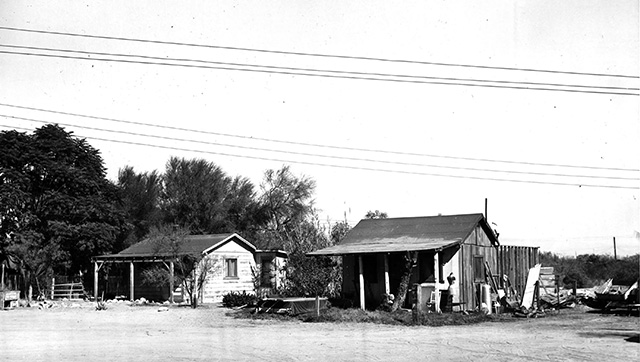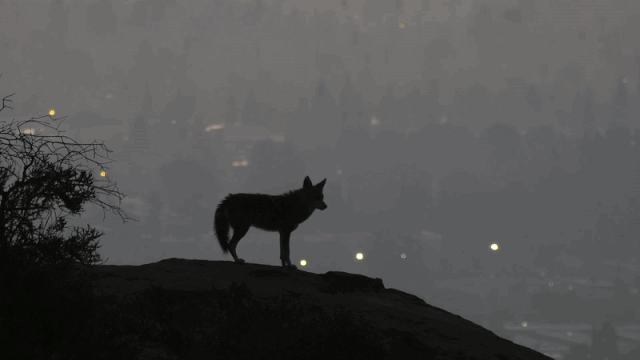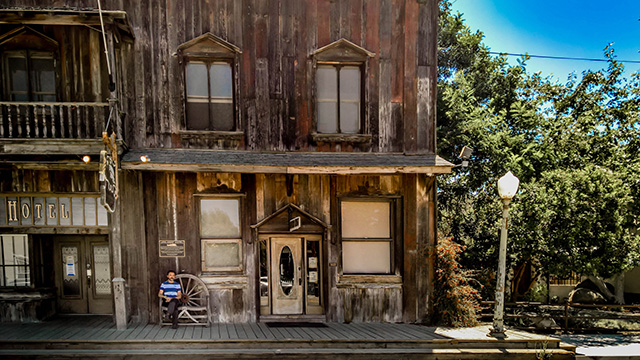
Good morning. It’s Tuesday, Sept. 27.
- Court blocks California law banning private prisons.
- Bay Area sheriff pulls 47 deputies from active duty.
- And Santa Clara runners win new fans with goofy photos.
Statewide
1.
The U.S. 9th Circuit Court of Appeals on Monday struck down a 2019 California law that banned private prisons, including those that operated on behalf of U.S. Immigration and Customs Enforcement. Judge Jacqueline H. Nguyen, an Obama appointee, said the law violated the Constitution’s “Supremacy Clause,” which bars states from interfering with the enforcement of federal laws. “California cannot exert this level of control,” she wrote. The California Attorney General’s office said it was “deeply disappointed.” A.P. | Bloomberg
2.

One in three California households — representing 3.5 million families — struggle to make ends meet. For many of them, the advent of free breakfast and lunch for all public school students has been a game changer, improving academic performance and well-being. “They’re just happier,” teacher Alyssa Wells said of her elementary school students in Oceanside. “They’ve got one less thing to worry about.” The Guardian
3.
A UC Santa Cruz student returning to campus after online learning discovered that the only housing he could afford was a trailer parked on a rented driveway away from campus. “Socially, you feel estranged,” said Matthew Chin, an environmental studies major. Across the UC system, thousands of students have struggled to find housing, with some living in cars, working multiple jobs, or taking out loans as a last resort. L.A. Times
4.

In 1950s Palm Springs, a close-knit community of Black and Latino residents lived in an area near downtown known as Section 14. But as the city grew into a popular resort destination, local authorities began to see it as a nuisance. Between 1954 and 1966, they evicted residents, seized homes, and tore the neighborhood down. Hotels, spas, and casinos rose in its place. Caitlin Yoshiko Kandil told the story of Section 14 in an article on the push for reparations in California. The Guardian
$223,239, $124,678, $127,226: The state’s reparations task force is starting to talk numbers. CalMatters
Northern California
5.
The Alameda County Sheriff’s Office stripped 47 deputies — about 10% of its force — of their guns and arrest powers after an internal audit revealed that they had failed psychological exams. The review was prompted by the Sept. 7 arrest of a sheriff’s deputy, Devin Williams Jr., in a double murder. KTVU, citing multiple sources, reported that Williams had failed a psychological exam. Most of the 47 deputies worked at the Santa Rita Jail, which has been embroiled in allegations of scandal and negligence. Mercury News | KTVU
6.
In August, Gov. Gavin Newsom announced an unprecedented review of why San Francisco has the state’s longest timeline for advancing housing projects. If the city fails to get its act in order by January, state officials warned, it will lose access to millions of state affordable-housing funds. “So how have city officials responded?” wrote Matthew Fleischer, editorial page editor at the Chronicle. “Have they shown the slightest bit of urgency? Or even a smidgen of introspection? Not one ounce.” S.F. Chronicle
7.

The Santa Clara University men’s cross-country team decided to have a little fun with their team photos this year — and they won new fans in the process. “Every single one of these is a work of art,” wrote sports reporter James Dator. SBNation | USA Today
Southern California
8.
School board races are supposed to be nonpartisan. But in San Diego County and beyond, conservative groups have recruited candidates animated by anger over school closures and curricula they say focuses too much on race and identity. “It’s markedly different from the past,” said Carl DeMaio, of Reform California, a conservative group that recruits candidates. “In some school board races, we’ve had too many candidates, and we had to winnow down the field.” S.D. Union-Tribune
9.

Coyotes have long roamed the back alleys and flood control channels of the Los Angeles Basin, attacking pets and humans alike. Animal groups have advocated learning to live with the animals. But a new breed of hard-line activists are now pushing for their eradication. Torrance recently became one of the few cities to commit to year-round trapping and killing of coyotes. “Coyotes may have been here first,” said City Councilman Aurelio Mattucci, “but we’re here now.” L.A. Times
10.
For years, the L.A. Times has published a “What Money Buys” series that highlights homes on the market at certain price points. Examples from just a few years ago now read like a time capsule. A 2019 story featured five-bedroom homes listed for $800,000 in the Los Angeles neighborhoods of Jefferson Park and Cypress Park. One of the homes is now estimated to be worth $1.28 million; another is $1.45 million. The $800,000 price point now buys a two-bedroom home. L.A. Times
11.

The L.A. Times on why so many Angelenos are being drawn to Los Alamos, a tiny town near Santa Barbara:
“This whole scene — a young pitmaster teaming up with a Michelin-starred French restaurant to serve an innovative menu in a rustic, everybody-knows-your-name setting — exemplifies some of the magic happening in Los Alamos, a three-hour drive north from Los Angeles.”
California archive
12.
In the early 1900s, the best way to cross the desert from San Diego to Arizona was by horse. Then a local businessman named Ed Fletcher had an idea: He proposed laying wooden planks across 7 miles of soft sand, a sort of beach boardwalk without the ocean. Joseph Lippincott, a prominent civil engineer, was quoted in the San Diego Tribune calling it “the most asinine thing he had ever heard of.” But Fletcher and his supporters forged ahead, trucking rail cars full of lumber into the desert and completing the Plank Road in 1915.
Ida Little, an old-timer who crossed the road in her youth, told an interviewer in 1992 that it was like a bumpy rollercoaster. It “was as good as having a chiropractic adjustment,” she said. Plank Road carried cars across the desert for more than a decade before being replaced by asphalt in 1926. The planks were torn up by campers for firewood or swallowed by the desert. But you can still see a segment of it 30 miles east of Calexico, where the Bureau of Land Management reconstructed 1,500 feet of the roadway along with a historic marker. San Diego Automotive Museum | Atlas Obscura
Below, a few pictures of the old Plank Road.




Get your California Sun mugs, T-shirts, and hoodies.

Thanks for reading!
The California Sun is written by Mike McPhate, a former California correspondent for the New York Times.
Give the gift of the California Sun.
Forward this email to a friend.
Click here to stop delivery, and here to update your billing information or cancel your support.
The California Sun, PO Box 6868, Los Osos, CA 93412
Wake up to must-read news from around the Golden State delivered to your inbox each morning.
